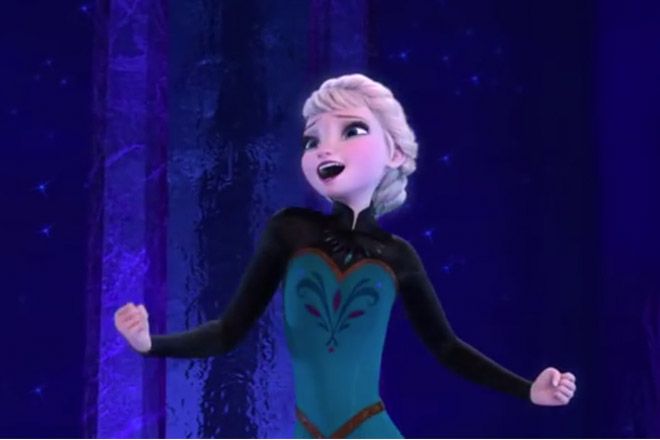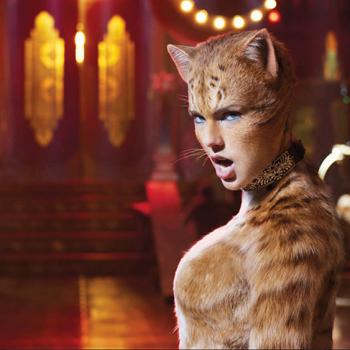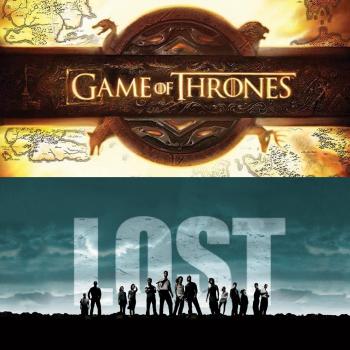
Ask people what they know about Frozen, and the answer will be universal:
Let it go!
Yet, when looking closer at the story, many will admit that this powerful anthem is the “I Want” song for the story’s villain, Elsa. After all, it’s Elsa’s fault that the nation is covered in ice: a problem that her sister, Anna – the official, feisty Disney princess of the film – has to solve. It’s Anna on the quest, after all. It’s Anna who gets the guy(s). It’s Anna who both rescues and needs to be rescued in a twist on the Sleeping Beauty trope in the end.
Then…why do we like Elsa more?
Well, I’d suggest because the movie got it wrong. Here’s the story they almost wrote. The shadow story, lurking just beneath the CGI; the story that audiences world over have responded to.
Let’s heat things up.
Do You Want to Build a Snowman?
First a refresher course for all three of you who haven’t seen the movie yet.
In the vaguely Scandinavian-esque nation of Arundelle, two princesses are playing after their bedtime. The elder daughter, Elsa, has the power to manipulate snow and ice. But while they’re horsing around, Elsa accidentally shocks her sister Anna, and nearly freezes her. Their parents bring Anna to the trolls who heal Anna – but Elsa’s parents decide to deal with Elsa’s abilities not by teaching her to celebrate and control her power, but by training her to “conceal, don’t feel,” since her powers are triggered by emotion.
Elsa then literally hides herself away in her bedroom, refusing to come out or speak with anyone. She is given gloves by her parents, and clothing that covers up most of her body, so that she doesn’t accidentally harm anyone else again. She is both emotionally and physically isolated in the name of love, while her sister is collaterally isolated for her own protection.
Several years later, their parents die in a storm at sea. And once Elsa comes of age, she is meant to be crowned Queen of Arundelle. This means that extroverted Anna will finally get to enjoy a large number of people at a party – which she does – but it also means that Elsa must be visible before those same strangers. Visible and, at one crucial moment, take up the orb and scepter with her bare hands.
At the party, Anna meets a handsome prince who immediately duets with her (ooh, la la! – voiced by Santino Fontana of Crazy Ex-Girlfriend hilarity). But when Anna tells Elsa that she and the prince are engaged, on top of the stress of the coronation, it’s too much for Elsa to handle and she loses control of her emotions and accidentally freezes all of Arundelle.
Horrified at what she’s done, Elsa runs away. And here’s the iconic “Let It Go” song. Watch it below in all its glory.
What follows is where I think the movie fails. But I’ll keep my commentary for the next section. Elsa glories in her gift, creates a castle made of ice, and moves into the entire freaking mountain range. (So metal.)
Meanwhile, back in Arundelle, Anna’s all like: “I have to save my sister! I’m spunky!” Her handsome prince won’t go with her, and so she treks off on her own, running into an alternative romantic partner, his animal sidekick, several colorful extras, an animated snowman and an abominable snowman Elsa inadvertently gave life to, those unfortunate trolls again (about as natural to this story as the gargoyles to The Hunchback of Notre Dame – not everyone needs a sidekick, folks), and then a final series of reveals that are too good to spoil here if you haven’t seen the movie yet.
The sisters are reunited, Elsa is Queen, Anna gets a guy, springtime is returned and somehow the snowman voiced by Josh Gad survives. A happy ending for all who deserve it.
Sounds like a good Disney musical, no? Sure is. But it could have been so much better.
The Cold Never Bothered Me Anyway
Talk about Elsa and Anna has revolved primarily around one being coded as an “introvert” and the other as an “extrovert,” which of course plays off not quite full understandings of what introversion or extroversion actually mean.
Introversion and extroversion merely explain how people acquire energy.
Introverts (like myself) create their energy from within: so expending energy on a party or in conversation or at a day job or in any social situation is a faster energy loss than it is for an extrovert who derives their energy exactly from social interactions. (See my favorite explanation of introversion with pictures here!)
While it seems quantifiably true that Anna is an extrovert in Frozen, I’m less convinced that Elsa came by her “introversion” naturally.
In fact, what I believe is that what Disney almost gave us was a princess who was traumatized in childhood.
Specifically: a princess who had been traumatized by repression.
Let’s look at the story again from Elsa’s point of view:
- She is born with inherent gifts
- Being a child, she makes a mistake…like children do
- Rather than reaffirming that her gifts are good and that everyone makes mistakes, and being given boundaries of how to use her talents so they may flourish, Elsa’s parents on the advice of the trolls, effectively begin to erase their daughter
- They isolate their daughters in the castle (further isolating Elsa in her own room); they even allow the trolls to remove the memory of Elsa’s gifts from Anna’s mind
- They reaffirm that Elsa’s fear (read: any strong emotion) is dangerous; they “lovingly” affirm her lack of humanity as “control”
- They reaffirm (read: don’t deny) that Elsa’s touch is evil; they give her gloves and high clothing (translation: your body is evil), and they don’t contradict her when Elsa starts punishing herself by drawing away from touch (the best abuse is the one we’re taught to inflict on ourselves)
- This has the further effect of confirming in Elsa that her entire being is fundamentally toxic: a belief that is “lovingly” confirmed by her father moments before he departs to his death – that by “staying safe” (that is, hiding, repressing, punishing herself) Elsa will be a “good girl” and “everything will be all right”
This is a picture of trauma.
However, we only catch glimpses of this shadow story in the prologue. When given a choice between sisters, the camera lingers on Anna and her reactions. Anna sings the majority of the first three major songs (“Do You Want to Build a Snowman,” “For the First Time in Forever,” and “Love is an Open Door”), and while it’s clear that Anna has also suffered collateral damage from how their parents behaved – particularly in being presumably neglected by their father, leaving her susceptible to less savory suitors – Anna has not been given the message that her entire being, her gifts, her feelings, her very body are inherently and irrevocably evil.
Elsa has.
That’s a lot for anyone to carry. But it doesn’t make you a villain. It makes you someone who has suffered parental abuse.
Children Will Listen
Before the coronation, Elsa sings the mantra she was clearly taught by her father:
Don’t let them in
Don’t let them see
Be the good girl you always have to beConceal, don’t feel
Put on a show
Make one wrong move and everyone will know
This is the mantra of an abused child. Never mind the fact that Elsa is now an adult and is about to be crowned Queen. Her growth was stunted years ago. If I might translate:
Be invisible; cease to exist
You are worthless unless you behave like a machine
Don’t take up too much space in this world
No one wants to know how you feel
It would be better if you were someone else; maybe she would be worthy of affection
You are not allowed to make mistakes
If you make a mistake, you will kill everyone
Because you are inherently a monster
And no one will ever love you
Dark stuff, no?
But this is exactly the stuff of fairy tales, which are full of step-mothers who are also children-eating witches. It’s full of fathers who try to sleep with their daughters. And dimly, it’s about how young women escape from generation after generation of parental trauma…usually into some messianic and hazy “happily ever after.”
These fairy tales are important because they show that trauma exists, and that it is unfair to the children who must seek for a better world to escape to. More importantly, these fairy tales have their heads on straight. Snow White, Sleeping Beauty, Cinderella, Rapunzel – none of the fairy tales say that these children “deserved” to be victimized. But neither do they shy away from the fact that victimization exists.
What fairy tales point to, as well, are possible means of escape from the bad family situation you’re in.
Snow White speaks up for her needs and is spared by the huntsman. She then goes off and is fairly entrepreneurial in giving herself an office manager position with seven dwarves. However, the lack of boundaries her parents give her allows her to be too trusting of strangers: which is her downfall when her stepmother comes calling. She is rescued by love in the form of a prince.
Sleeping Beauty is cursed by a bad fairy – although that’s par for the course. She further isolated by her father who, again, gives her no boundaries by instead of, I don’t know, teaching her all about spinning wheels and how to use them, attempts to banish all possible means of pain from his kingdom. Having been made “safe,” and not knowing what to do – or even how to recognize something dangerous, Sleeping Beauty is tricked by the fairy and sent into sleep. The entire kingdom is also put under: a physical manifestation of the soporific of the mind the father had commanded earlier. And she is ultimately (in the sanitized version) rescued by love in the form of a prince.*
* In the original version, further trauma awaits. Since Sleeping Beauty has been left literally defenseless by her dad, a rando dude comes in and starts raping her in her sleep. She conceives, figures out where the dude lives, and his wife tries to eat her kids. She, having finally gained some street smarts, tricks the wife and kills her. She then obtains the rando dude as a husband. Original fairy tales are dark. Why? Because:
These are not warning stories for children. These are What Not To Do Manuals for parents.
Cinderella loses her mother and – in later versions – her father as well. She’s forced from privilege into servitude by her stepmother who crashes the whole family into poverty. (In several original stories, Cinderella’s negligent father is alive and simply allows this to happen. Once again: a warning for parents, not children.) Fortunately, a surrogate mother is on the scene to send Cinderella out into society, giving her good boundaries such as a curfew which is magically enforced. “You are worthy to go out and enjoy yourself; you are also bound to responsibility. Go forth and be an adult!” This positive reinforcement is what helps Cinderella literally break through her stepmother locking her up in the attic away from the prince who is seeking her. Cinderella proactively gets her man, and is once again rescued by love in the form of a prince.
Rapunzel is captured by an evil witch who locks her in a castle with literally no means of escape. She is told horror stories of the outside world, and she is also forced to use her body (her hair) as a means of elevating someone else (the witch). When a prince happens upon her, Rapunzel is absolutely unprepared. And, in the original version of the story…guess what? She gets pregnant! Why? Because she wasn’t taught anything about anything. Also: she’d been covertly emotionally raped by her mother figure her entire life. What’s one more infringement on your personal space among many? The witch is furious (great mother figure there; so loving) and casts Rapunzel out, simultaneously blinding the prince. In most versions, Rapunzel eventually finds her prince after she’s already given birth (so metal). Her tears (her suffering) restore his eyesight, and…she is rescued by love in the form of a prince.
So that everyone ends up…
“Happily Ever After?”
Let’s take a moment to look at how all the old fairy tales ended, and why Frozen is so excitingly different.
Just from a brief survey above (not even counting such true trauma stories as Thousandfurs, which is beautifully if painfully retold by Robin McKinley in Deerskin), we see that a typical way to flee from a bad family situation is the old “Prince Charming” escape route.
But fairy tales are allegories. What does “Prince Charming” actually mean?
Well, in one way the handsome prince might be exactly that: a means of choosing one’s own happiness. A form of autonomy, rebellion, self-actualization.
It could also symbolize a means of starting a new generation: of empowered women who won’t repeat their mothers’ or stepmothers’ or absentee fathers’ mistakes again. Who will work not to abuse their children.
It could, theologically, be messianic. That they are saved by a faceless but supreme and loving force. Swept away to a “happily ever after” sounds awfully Divine Comedy to me.
It could also be – and here’s where I think all the others and even Disney elides – that they are saved by love. Love either erotic as in the traditional tales or, as in the case of Frozen, finally loving yourself.
Can’t Hold It Back Any More
This is what “Let It Go” is essentially about. It’s an exorcism.
It’s an exorcism of all the evil thoughts put into Elsa’s mind by her family. It’s an exorcism of repression, invisibility, of lacking touch, of existence-as-evil.
And it’s more than an exorcism: it’s a eulogy. She repeats her mantra, and then literally lets her old life go.
And it’s more than a eulogy: it’s a celebration. It’s a discovery. It’s not an “I Want” song – it’s an “I Am” song. And that is far more powerful. In fact, I dare say:
It’s a love song between Elsa and herself.
The song itself is worth an entire post discussing the orchestration and how it builds from tentative high notes into a strident backbeat, into positively euphoric drumming as Elsa thrills at feeling for the first time – and as that feeling creates beauty – creates mountains – creates castles – creates worlds big enough for this traumatized little girl, who was always bigger than her cage.
But let me instead focus for a moment on the visuals. (See video above.) There is a visceral thrill at one particular part of the video: the transformation moment that had those marines hooting and hollering so. (Of course there’s some problems here, too, but I’ll let this article articulate those.)
The moment I’m speaking about is at the very climax of the song: the last verse when Elsa literally lets her hair down. When she transforms her restrictive clothing into something that reveals her actual femininity, her – dare I say it – sexuality.
Why is this so important? Why are the marines, and every little girl, and everyone at karaoke, and my own self hooting and hollering every single time?
Because one of the fundamental repressions Elsa had to deal with had to do with her own flesh, with her ability to be touched – sexually or platonically. With her ability to be seen as more than just a destructive force, but to be seen without restriction but with confidence and celebration.
And I can’t help thinking of our well-meaning purity cult within the Christian (and Jewish and Muslim) cultures. I can’t help but think of the way, with love, we are still keeping our little girls “safe” by telling them their body is evil, and their feelings don’t matter, and their abilities – their literal life-giving abilities; their ecstatic, dare I say, orgasmic abilities – are shameful, evil, to be clothed over, locked up, shut down, cut off.
I can’t help but think how we are still traumatizing our own children…with the trauma we received ourselves.
A Religion of Sensuality
This past week at mass, I had the opportunity to cantor. Which means that I see most of the mass from the point of view of the altar: half-way between the priest and the tabernacle. I used to get very distracted while cantoring – worried about my soft-palate placement, or how to sing over my passaggio – technical singing stuff. But since I’ve been cantoring more, I’ve been able to enter deeper into prayer while standing half-way between the world and my God.
It was somewhere in the Liturgy of the Eucharist (all the mass parts are easy to sing here; they’re deep in the bones), and it struck me how ironic it is that we, as a Church, receive the Body and Blood of Christ…and how many of us absolutely fear the flesh. His words sprang to mind: “Does this scandalize you?”
I thought of Him on the cross, and how – in reality – He was naked. How we cover Him up in art. And the Words seemed to come, angrily, more hurt than all His lashes: “It is you who are ashamed of My Body. It is you who stripped Me to shame Me – shame Me with this flesh which I made good. It is you who are still ashamed of your bodies, and so put a loincloth on My nakedness. It is your shame I bear on My skin. It is your shame that you will not let Me heal in you. You speak in holiness, and you are hollow. You think that you are happy; but you will not let Me touch you with My mirth. I have given you what is good, and you hide away for fear of offending Me. That pains Me more than most of My wounds: that you will not drink deep of the Cup I have given you, but call it poison. That you keep yourselves far from Me, and think that this is holy. I want you to rejoice. I want you to be courageous.”
In America, in particular, all of our religion has been tinged with Puritanism. Whereas our European Catholics painted nudes, we break out the fig leaves. Those who “rebel against the Church” are most often rebelling against this strain of Puritanism – of unhelpful repression which is labelled “self-control” – and which is antithetical to the riotous order of God Himself.
And I can’t help thinking of one of my other favorite theologians, C. S. Lewis, who wrote his own version of Frozen in his novel, The Great Divorce.
In Chapter 11, the Narrator sees a man with a lizard on his shoulder. The lizard is hissing and making a fuss, and the man is trying to keep the lizard quiet in order to sneak it into Heaven. An angel approaches the man and asks if he may kill the lizard. Again and again the angel asks, while the man begs and bribes and tries everything to keep the lizard (generally agreed upon as an allegory for lust – but any habitual sin will do).
Finally, the man allows the angel to crush the lizard and the man starts transforming from someone small and mean into a glorious warrior. But – and here’s the beautiful part – the lizard also starts transforming into a golden stallion whom the man mounts and the two gallop off together, deeper into Paradise.
Several articles ago, someone asked in the comments whether we shouldn’t not face our lusts (or whatever habitual sins) head on. But instead, we should – he suggested – like Elsa, “conceal, don’t feel.”
But as Lewis and “Let It Go” remind us, whatever we struggle with is probably the place where we are most powerful. It is a lie, it is trauma, it is the helplessness we were handed by our parents, our society, even our dear faith that says: “Don’t let them in, don’t let them see, be the good person you always have to be.” When, in fact, if you were to embrace whatever it is you hate about yourself – if you were to truly tame it, not eviscerate it; to truly control it, not stifle it; to truly celebrate it, not shame it; to truly use it, not silence it – you’d discover that it was a beautiful gift all along. All you have to do is “Let It Go.”
For the First Time in Forever
If I were to rewrite Frozen (and after how I fixed Solo, I think Disney should totally hire me – just sayin’), I’d keep most everything up through “Let It Go.”
But then I’d stay focused on Elsa’s continued discovery. I’d let our heroine, Elsa, actually make more mistakes: come to some wrong conclusions, whatever they may be. While Anna finds her and tries to convince her sister that Elsa was happier when repressed. I’d have Elsa listen to Anna, and try to save the world from her own powers – and perhaps Elsa nearly dies, spent from actively working against what she can do.
I’d introduce a fairy godmother type character. (Not the trolls.) Olaf can stay as the sidekick, as Elsa questions how her snow ability can give life. I’d have a training montage as Elsa learns control. I’d have a final confrontation with Anna demanding that Elsa make it never winter…and the Elsa somehow getting the memories back in Anna’s mind of a time before their trauma, when they were just two girls, seeing what the world had to offer.
I’d have Elsa – or maybe Anna! – yes, Anna discovers she has powers, too. Summer powers to conjure images of their parents; memories of earlier days. I’d have the parents ask forgiveness..and somehow through the combined powers of both girls: an embrace.
I’d have both sisters taking turns ruling…and then six months of pure freedom. We can leave Prince Charming and his reindeer at home.
Most of all: I’d make damn sure that the girl who was victimized wasn’t poised as the villain.
Because of all the stories we tell to little girls, that one we really need to…let go.
 Image courtesy of Disney.
Image courtesy of Disney.
Want to support the Pop Feminist? You can make articles possible by becoming a patron for as little as $1/month over on Patreon!












